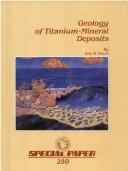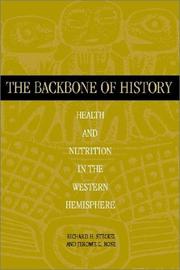| Listing 1 - 10 of 11 | << page >> |
Sort by
|
Book
Year: 1980 Publisher: Tallinn Valgus
Abstract | Keywords | Export | Availability | Bookmark
 Loading...
Loading...Choose an application
- Reference Manager
- EndNote
- RefWorks (Direct export to RefWorks)
Book
ISBN: 1900455080 9781900455084 Year: 1996 Publisher: Grantown-on-Spey, Scotland Colin Baxter Photography
Abstract | Keywords | Export | Availability | Bookmark
 Loading...
Loading...Choose an application
- Reference Manager
- EndNote
- RefWorks (Direct export to RefWorks)
Book
Year: 2014 Publisher: [Bethesda, MD] : Wildlife Society
Abstract | Keywords | Export | Availability | Bookmark
 Loading...
Loading...Choose an application
- Reference Manager
- EndNote
- RefWorks (Direct export to RefWorks)
Body condition has a strong influence on reproduction and survival. Consequently, understanding spatiotemporal variation in body condition may help identify processes that determine life history, and thus demography. The effect of environmental variables on individuals' body condition, although widely documented, is generally achieved by investigating habitat, plant phenology, or density separately, such that cumulative or interactive effects can rarely be considered. We investigated how spatial and annual variation in habitat composition, deer density, and vegetation productivity influenced white-tailed deer (Odocoileus virginianus) body condition during the breeding period. We detailed changes in body condition using several indices, including body mass, peroneus muscle mass, rump fat, kidney fat index, and antler size in >4,000 male and female deer of different ages harvested during September-December, 2002-2006 on Anticosti Island, Québec, Canada. Overall, females and yearlings ^harvested in fir forests were in poorer condition than those harvested in peatlands or spruce forests, whereas body condition of adult males was greater when open habitats were highly available. High deer density reduced autumn gains in fat, muscle mass, and body mass in males and yearlings, and in fat for females. Surprisingly, density positively affected the size of male antlers. High density at birth favored fat accumulation in adult females, suggesting strong selective pressure that removed low-quality individuals in early age at high deer density. Low Normalized Difference Vegetation Index (NDVI) in spring was associated with delayed but rapid spring green-up, and favored higher body condition in autumn. Reproduction affected most parameters of body condition; lactating females had less mass, fat, and muscle than non-lactating females, whereas mass and fat of males >4 years old steeply declined during the rut. Body mass and fat reserves showed a stronger response to density, habi tat, NDVI, and reproduction than muscle mass. Body mass was a good integrating measure of fat and muscle mass, although allocation between muscle growth and energy storage was confounded. Our study highlighted the influence of environmental conditions on individual fat reserves, muscle mass, and body mass in autumn, with potential effects on reproduction and winter survival. Appropriate monitoring of body-condition indices in the fall can track the effect of environmental variables and management practices on animal populations.
White-tailed deer --- Mammal populations --- Habitat --- Food --- Growth --- Measurement
Book
Year: 1971 Publisher: Kalø, Denmark: Game Biology Station
Abstract | Keywords | Export | Availability | Bookmark
 Loading...
Loading...Choose an application
- Reference Manager
- EndNote
- RefWorks (Direct export to RefWorks)
White-fronted goose --- Bean goose --- Pink-footed goose --- Birds --- Migration
Periodical
Abstract | Keywords | Export | Availability | Bookmark
 Loading...
Loading...Choose an application
- Reference Manager
- EndNote
- RefWorks (Direct export to RefWorks)
Commercial crimes --- White collar crimes --- Crime --- Infractions économiques --- Crimes en col blanc --- Economic aspects
Book
Year: 1930 Publisher: New York City By order of the Trustees of the American Museum of Natural History
Abstract | Keywords | Export | Availability | Bookmark
 Loading...
Loading...Choose an application
- Reference Manager
- EndNote
- RefWorks (Direct export to RefWorks)
Apache Indians --- White Mountain Apache Indians --- Western Apache Indians --- Social life and customs
Book
ISBN: 9155850529 Year: 1975 Publisher: Stockholm Svenska Naturskyddsföreningen
Abstract | Keywords | Export | Availability | Bookmark
 Loading...
Loading...Choose an application
- Reference Manager
- EndNote
- RefWorks (Direct export to RefWorks)
Birds --- Pesticides and wildlife --- White-tailed sea eagle --- Effect of pesticides on

ISBN: 0813722594 9780813722597 Year: 1991 Publisher: Boulder : Geological Society of America,
Abstract | Keywords | Export | Availability | Bookmark
 Loading...
Loading...Choose an application
- Reference Manager
- EndNote
- RefWorks (Direct export to RefWorks)
Titanium ores --- Titanium dioxide --- Anatase --- Brookite --- Octahedrite --- Titania (Chemical) --- Titanic acid anhydride --- Titanic oxide --- Titanium oxide --- Titanium white --- Oxides --- Titanium compounds --- Ores
Book
ISBN: 9172100656 Year: 1979 Publisher: Stockholm Almqvist och Wiksell
Abstract | Keywords | Export | Availability | Bookmark
 Loading...
Loading...Choose an application
- Reference Manager
- EndNote
- RefWorks (Direct export to RefWorks)
Betula pubescens --- -Plant ecology --- -Timberline --- -Alpine timberline --- Alpine treeline --- Latitudinal timberline --- Latitudinal treeline --- Timber-line --- Tree line --- Treeline --- Forest ecology --- Mountain ecology --- Vegetation boundaries --- Botany --- Plants --- Ecology --- Betula alba --- Betula odorata --- Hairy birch --- White birch (Betula pubescens) --- Birch --- -Betula pubescens --- Downy birch --- Plant ecology --- Timberline --- Alpine timberline --- Phytoecology --- Vegetation ecology --- Floristic ecology

ISBN: 0521801672 0521617448 0511549954 Year: 2003 Publisher: New York Cambridge Melbourne Cambridge University Press
Abstract | Keywords | Export | Availability | Bookmark
 Loading...
Loading...Choose an application
- Reference Manager
- EndNote
- RefWorks (Direct export to RefWorks)
For the same reasons that explorers of the early twentieth century strove to reach the poles, and their modern counterparts journey to outer space, most people want to visualize the contours of the human experience - the peaks of adaptive success that led to the expansion of civilization, and the troughs in which human presence ebbed. The Backbone of History defines the emerging field of macrobioarchaeology by gathering skeletal evidence on seven basic indicators of health to assess chronic conditions that affected individuals who lived in the Western Hemisphere from 5000 BC to the late nineteenth century. Signs of biological stress in childhood and of degeneration in joints and in teeth increased in the several millennia before the arrival of Columbus as populations moved into less healthy ecological environments. Thus, pre-Colombian Native Americans were among the healthiest and the least healthy groups to live in the Western Hemisphere before the twentieth century.
European Americans --- African Americans --- Human remains (Archaeology) --- Indians --- Health and hygiene --- History --- Food --- America --- Antiquities --- Congresses --- Aborigines, American --- American aborigines --- American Indians --- Amerindians --- Amerinds --- Pre-Columbian Indians --- Precolumbian Indians --- Ethnology --- Skeletal remains (Archaeology) --- Human skeleton --- Primate remains (Archaeology) --- Europeans --- Whites --- Afro-Americans --- Black Americans --- Colored people (United States) --- Negroes --- Africans --- Blacks --- Civilization --- Americas --- New World --- Western Hemisphere --- Bioarchaeology --- Indigenous peoples --- Black people --- White people --- Arts and Humanities --- #A0507HI
| Listing 1 - 10 of 11 | << page >> |
Sort by
|

 Search
Search Feedback
Feedback About UniCat
About UniCat  Help
Help News
News